The FC/ASW (Future Cruise/Anti-Ship Weapon) is a joint UK, French and (latterly) Italian development programme to develop a replacement for a number of air and surface launched weapons.
In UK Service, FC/ASW will replace Storm Shadow and Harpoon Block 1C (which has been replaced as an interim measure by the Interim Surface to-Surface Guided Weapon System (I-SSGW), met by the Kongsberg Naval Strike Missile)
It is also, the French FMAN/FMC (Futur missile anti-navire/Futur missile de croisière), that is intended to replace Scalp (Storm Shadow) and Exocet.
Italy joined the programme, to replace their Storm Shadow and Teseo missiles.
FC/ASW History
The UK The Selected Precision Effects at Range (SPEAR) programme was in the concept phase by 2005, although internal work had started before that, as a means of defining a number of air-launched weapons as part of the Complex Weapons portfolio.
They were all to be air-launched stand-off weapons that could be used against a wide range of stationery and fast-moving targets day or night, and with the ability to defeat countermeasures.
It was defined as;
Selective Precision Effects at Range (SPEAR) is the Ministry of Defence’s (MoD) research and development request for highly accurate, beyond visual range re-targetable weapons which can receive target information updates over a data-link (network) in near real-time as part of the UK’s Network Enabled Capability (NEC)
SPEAR has been split into several capability numbers that have evolved since then.
SPEAR Capability 5 was initially defined as a longer-range replacement for Storm Shadow for Typhoon and the F-35B.
Some initial concept work was completed in 2005 but, the majority of the complex weapons team were concentrated on the other SPEAR components (Storm Shadow midlife extension, Brimstone and SPEAR Cap 3)
From 2010, the MoD and DGA recognised that there was likely to be a convergence of requirements and started to explore how requirements could be harmonised. As part of the 2010 Lancaster House Agreement between the UK and France, they agreed to a ten-year strategic plan for the UK and French missile sector.
This plan included a midlife upgrade/renovation of Storm Shadow/Scalp and ASTER missiles, what would become Sea Venom and a concept study for FC/ASW.
In 2011, and as part of their wider Concept Visions programme, MBDA released marketing materials that described a future product called CVS401 Perseus.
The advanced, supersonic, agile and stealthy airframe is powered by a revolutionary ramjet motor built around a highly compact Continuous Detonation Wave Engine making it an unrivalled penetrator of defences. Perseus is a perfect weapon against fast relocatable targets when combined with the advanced dual mode sensor package.
The design was for a 5m long missile that weighed less than 800 kg, and had a range of 300 km.
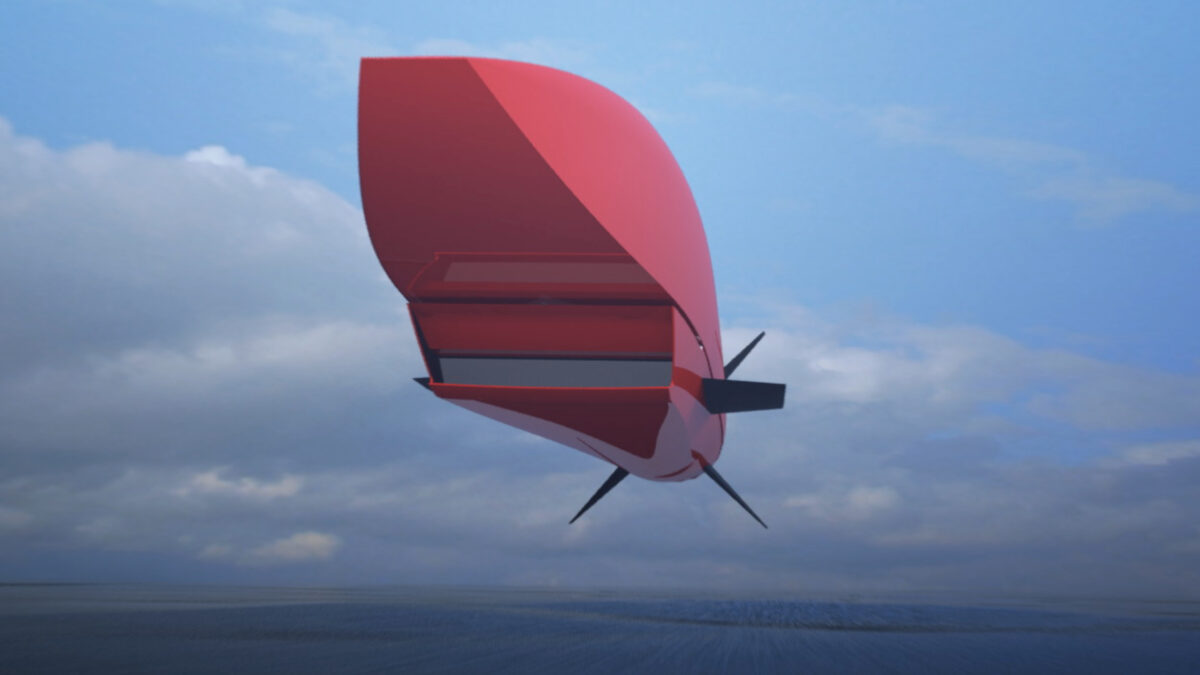
It was a high supersonic missile, Mach 3+, and included two independently guided effectors ejected from the payload module.
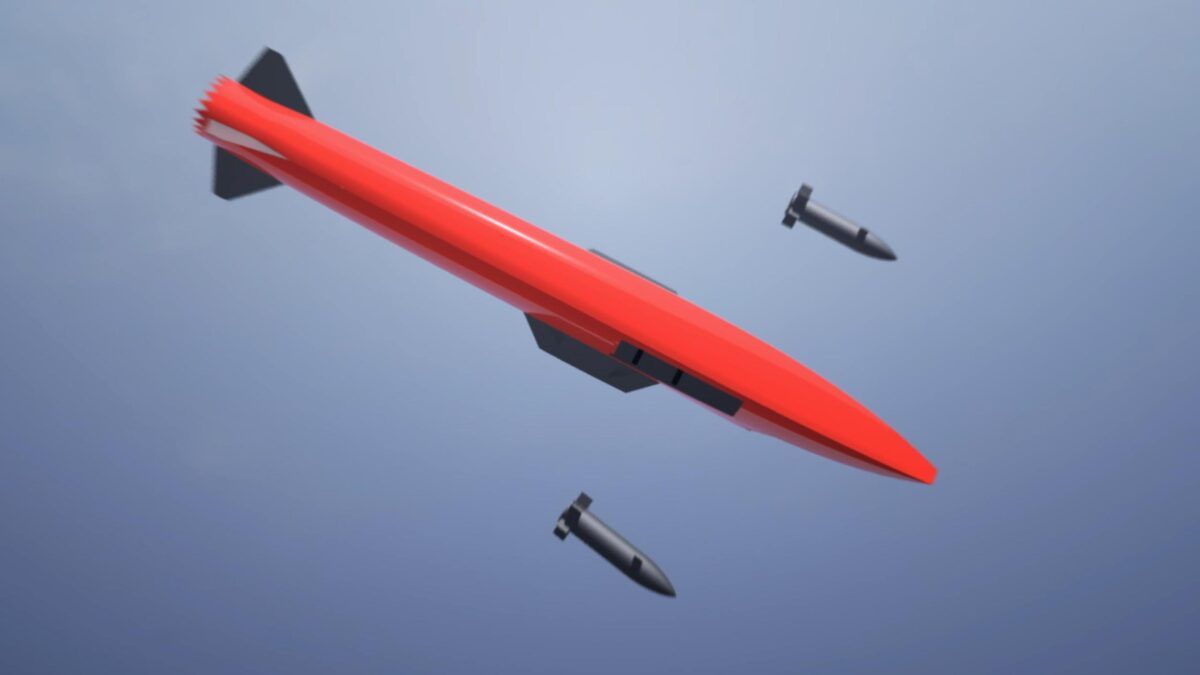
A third warhead remained on-board for a dispersed lethal effect on multi-elements targets such as a large warship or a ground-based missile system.
Although not directly linked to SPEAR Cap 5, many observed that it could be used to inform the requirement.
At the 2012 Lancaster House Summit, an initial study contract was awarded to MBDA to explore the joint requirements and establish whether a common concept approach could be developed, whilst maintaining operational sovereignty and generating prosperity for both nations.
The UK/France Defence and Security Summit in 2014 resulted in several decisions, including this one on Storm Shadow/SCALP.
Progress has also been made on the SCALP-EG and Storm Shadow refurbishment and upgrade programme where both governments have agreed to share data associated with national concept and assessment phase programmes. We aim to agree on a Memorandum of Understanding for staffing by early summer 2014. Looking further ahead, we continue to work to progress the joint concept study assessing possible solutions to meet our long-term requirements to replace Harpoon, Exocet, and Storm Shadow/SCALP. The concept study is due to be completed later this summer
This new missile is notionally designed to meet the SPEAR Cap 5 requirement, intended to be in service between 2030 and 2035.
Later in 2014, further details emerged as the preliminary concept study concluded.
Janes confirmed the name of the joint UK/France missile would be Future Cruise and Anti-Ship Weapon (FCASW) / Futur Missile Antinavire/Futur Missile de Croisière (FMAN/FMC).
MBDA subsequently reported a successful design review for the Anglo-French FC/ASW (Future Cruise/Anti-Ship Weapon)
The conclusion of this Key Review makes it possible to select the most promising missile concepts in order to meet the requirements expressed by both nations’ armed forces. More in-depth studies will now be conducted on these concepts with the aim of identifying the solutions that will be selected at the end of the concept phase in 2020 in order to answer both nations’ requirements for long range anti-ship missions, suppression of enemy air defences and deep strike.
The conclusions of this study will also make it possible to establish the road maps for maturing the technologies required, and to launch any follow on assessment phase. This new phase will demonstrate the necessary maturity of the weapon system and its key components, to be followed by the development and production phase in the 2024 timeframe, so that current weapons systems can be replaced in accordance with required timescales.
Both nations confirmed their intent to proceed at the Amiens summit in March 2016
Whilst both national timetables converged completely for the deep strike requirement, both SCALP and Storm Shadow were planned to be out of service in the same timeframe, there was a divergence for the anti ship requirement. With the Harpoon planned to leave Royal Navy service before Exocet left the Marine National.
The Out of Service Date (OSD) for Harpoon was planned to be 2018, the In-Service Support contract with Devonport Royal Dockyard Ltd ran to November 2018.
This changed with a slight extension to 2023 to retain it in service, announced in early 2017.
The Royal Navy continuously reviews the capabilities it requires. While work is in hand to consider options for the replacement of the Harpoon missile system, the Navy has decided to extend its service life beyond 2018.
2017 Written Answer
A three year €100m contract for further concept development of FC/ASW was awarded to MBDA in March 2017, but the UK and France contributing 50% each.
On the 28th of August 2019, the MoD issued a tender note for the Interim Surface to Surface Guided Weapon System (I-SSGW)
The TTH project team, part of the UK Ministry of Defence, hereafter referred to as the authority, has a requirement for the provision and introduction into service of the I-SSGW system as an interim replacement for the existing system that is going out of service. The I-SSGW is to provide a ship launched over the horizon precision anti-ship capability and a terrain following precision maritime land attack capability. It is anticipated that the I-SSGW capability will operate on X 5 Type 23 (Towed Array) frigates capable of concurrent Anti-submarine warfare (ASW) and Anti Surface Warfare (ASuW) operations in protection of a formed Maritime Tasking Group, for a 10-year period.
The terrain-following requirement likely excluded Harpoon and Exocet.
It was speculated that bidders might include the Lockheed Martin Long Range Anti-Ship Missile (LRASM), Kongsberg Naval Strike Missile (NSM), Saab’s RBS15 Mk4 and the Gabriel V from Thales/IAI called the Sea Serpent.
A March 2021 Written Answer provided an update on the Interim Surface to Surface Guided Weapon System (I-SSGW)
The interim surface-to-surface guided weapon will replace the Royal Navy’s existing Harpoon missile capability. There was a healthy response from Industry to the Pre-Qualification Questionnaire and we are planning to proceed to issue an Invitation to negotiate to the down selected bidders later this year.
In February 2022, the MoD confirmed I-SSGW had been cancelled,
The industry was formally notified by the Ministry of Defence (MoD) earlier this month that the Interim Surface-to-Surface Guided Weapon (I-SSGW) programme had been cancelled. This decision came despite a commitment in the March 2021 Defence Command Paper to procure a replacement for the RN’s legacy ship-launched Boeing Harpoon Block 1C missile.
In somewhat of a reversal, a Defence Select Committee evidence session on the 5th July 2022 saw this statement from the Secretary of State for Defence (Ben Wallace MP)
there is an interim plan to replace Harpoon in between what we might settle upon in the long term. I can’t provide details yet as I’m not sure when it will be put out to tender, but there is a plan to do so.
At about the same time, a number of defence media sources speculated that the Royal Navy favoured the Kongsberg/Raytheon Naval Strike Missile.
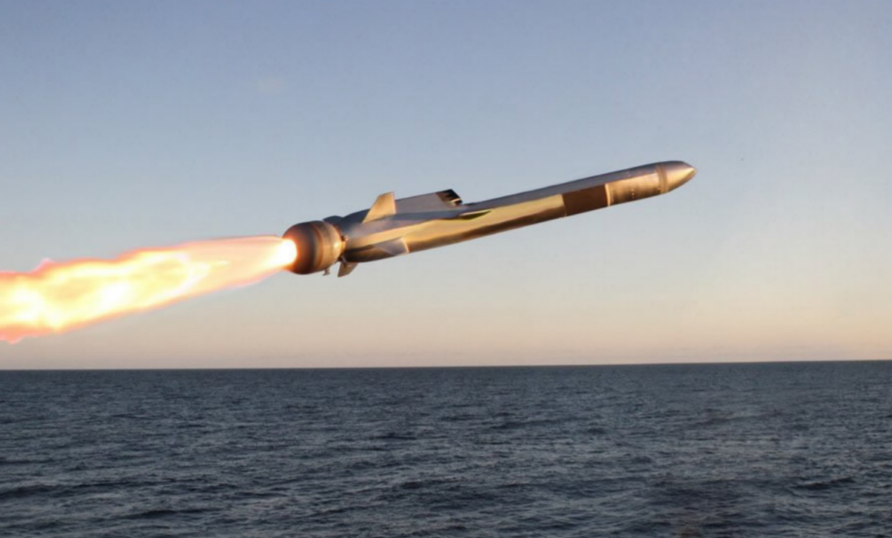
July 2021 confirmed the planning assumption for FCASW in-service dates
The Planning Assumption for Service Entry for Future Cruise /Anti-Ship Weapon on the T26 Frigate and Typhoon aircraft is 2028 and 2030 respectively.
FC/ASW was to meet three distinct requirements:
- Anti-ship strikes;
- Elimination of enemy air defences
- Deep strikes against critical targets
FC/ASW evolved along two paths, with two missiles being developed.

Although there will be a high degree of commonality, one will be optimised for high speed, and the other for low observability.
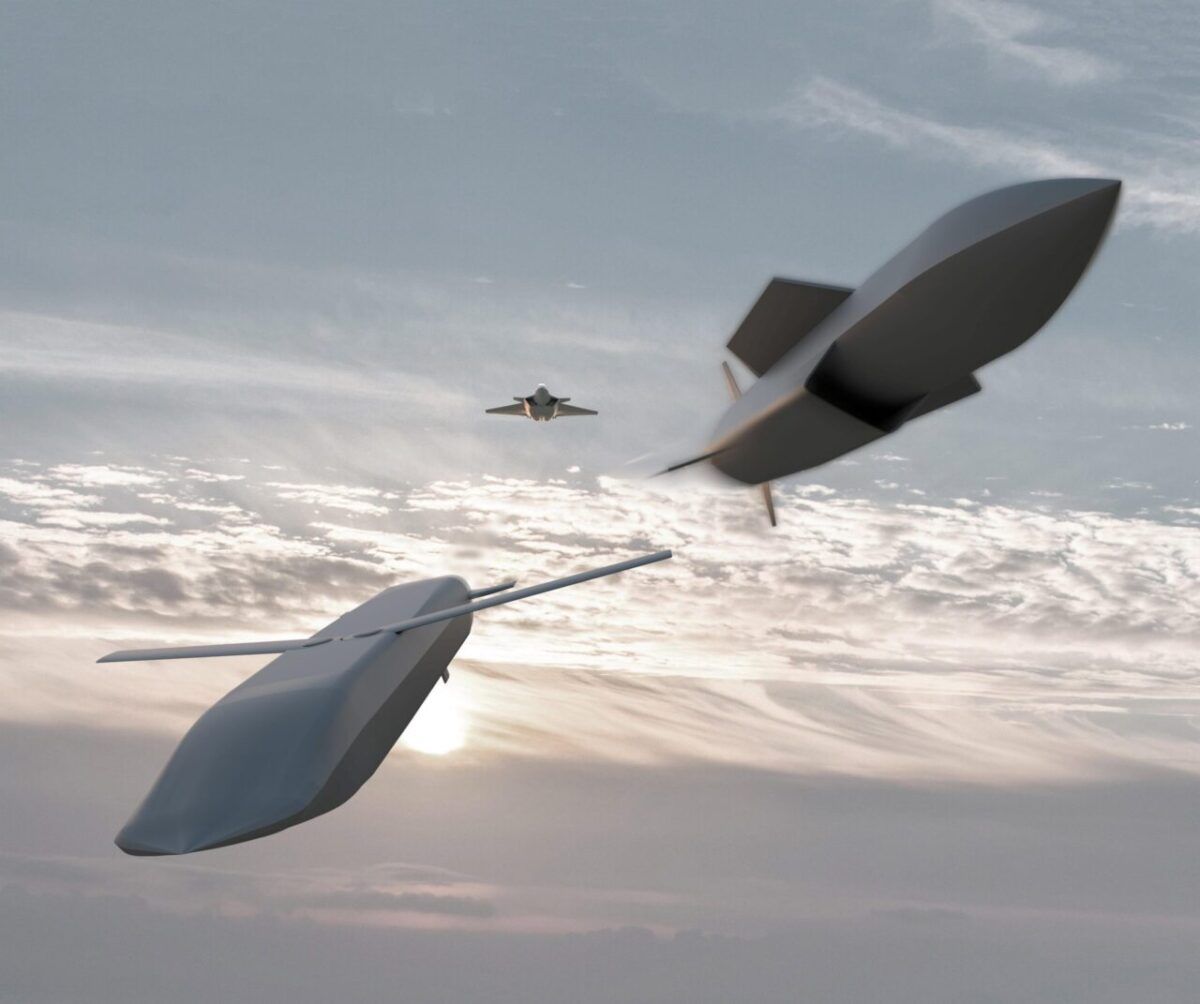
This would give rise to an interim Royal Navy requirement.
Further development work was announced in February 2022
The two missile approach was formerly confirmed by these announcements.
In November 2022, Kongsberg and the MoD confirmed the selection of the Naval Strike Missile for both Type 23 Frigates and Type 45 Destroyers.
UK and Norwegian authorities have today announced that they have agreed to further strengthen existing defence ties. The Royal Navy will receive the Naval Strike Missile (NSM), outfitted on Type 23 frigates and Type 45 destroyers, in a collaboration with the Norwegian government.
And from the Royal Navy
Eleven Type 23 frigates and Type 45 destroyers will be fitted with the sea-skimming Naval Strike Missile, capable of knocking out major enemy warships at ranges of more than 100 miles away. The MOD today ordered the missile system as the interim replacement for the existing Harpoon, which reaches the end of its active life next year.
The Naval Strike Missile will plug the gap between Harpoon and the advent of its permanent successor, the ‘future offensive surface weapon’, which will become the Fleet’s premier long-range, heavy duty anti-ship missile in 2028, carried by the Royal Navy’s next-generation Type 26 frigates, currently under construction on the Clyde.
UK defence firms Babcock and BAE Systems will install NSM on the 11 warships, with the first ship due to be operational by the end of next year.
Worth noting that the requirement name for the Royal Navy FC/ASW is Future Offensive Support Weapon (FOSW)
Italy joined the FC/ASW programme in 2023, signing a letter of intent, followed by additional funding the year after.
It was speculated the UK would favour the stealth variant, and France, the high-speed variant, although this was not officially confirmed.
The first imagery of a Royal Navy vessel with a Naval Strike Missile appeared in December 2023.
A 2024 Parliamentary Answer confirmed the current status of FC/ASW.
The Future Cruise / Anti-Ship weapon programme is in the third year of the assessment phase and joint Anglo-France work is designing novel technological advances in missile capability. Significant progress has been made on suitable candidate weapon systems to fulfil the Naval and Air requirements.
At this stage of the programme, work is focused on reducing technical and schedule risk, prior to the potential Demonstration and Manufacturing phases, and preparations are underway to prepare towards Full Business Case. Additionally, progress is also being made to explore bringing Italy on board as a partner nation, with a Letter of Intent signed in June 2023.
The planning assumption for service entry for the maritime-launched Future Cruise / Anti-Ship Weapon is 2028; a decision around which options, including off the shelf choices, should fulfil this requirement is ongoing, and will be confirmed in due course in the Full Business Case
Work continued, interestingly from above, ‘off the shelf’ options remained on the table.
The Planning Assumption for Service Entry for Future Cruise /Anti-Ship Weapon on the T26 Frigate and Typhoon aircraft is 2028 and 2030 respectively.
It was reported in November 2024 that key assessment phase activities had been completed.
Presenting an update at the Euronaval 2024 exhibition in Paris, held from 4 to 7 November, MBDA officials disclosed that the subsonic, ultra-low observable FC/ASW variant, known as TP15, had been the subject of radio frequency (RF) signature testing, while the ramjet propulsion system for the high-speed RJ10 version has completed wind tunnel tests. The company also disclosed that FC/ASW was now being groomed for high-value airborne asset (HVAA) interdiction alongside land attack, anti-ship, and suppression/destruction of enemy air defences (SEAD/DEAD).
This reporting also pointed out that FCASW was likely to be used for a wider mission set than originally required.
Before reading on, would you mind if I brought this to your attention?
Think Defence is a hobby, a serious hobby, but a hobby nonetheless.
I want to avoid charging for content, but hosting fees, software subscriptions and other services add up, so to help me keep the show on the road, I ask that you support the site in any way you can. It is hugely appreciated.
Advertising
You might see Google adverts depending on where you are on the site, please click one if it interests you. I know they can be annoying, but they are the one thing that returns the most.
Make a Donation
Donations can be made at a third-party site called Ko_fi.

Think Defence Merch
Everything from a Brimstone sticker to a Bailey Bridge duvet cover, pop over to the Think Defence Merchandise Store at Red Bubble.
Some might be marked as ‘mature content’ because it is a firearm!
Affiliate Links
Amazon and the occasional product link might appear in the content, you know the drill, I get a small cut if you go on to make a purchase
FC/ASW Capabilities
FC/ASW remains subject to a great deal of speculation, with little or no confirmed details.
We do know there are two versions.
TP15 — An air launched low observable high subsonic variant focussed on defeating advanced enemy air defences and hardened critical targets, that the UK is leading on.
RJ10 — A vertically launched high supersonic anti shipping naval version that France is leading on.
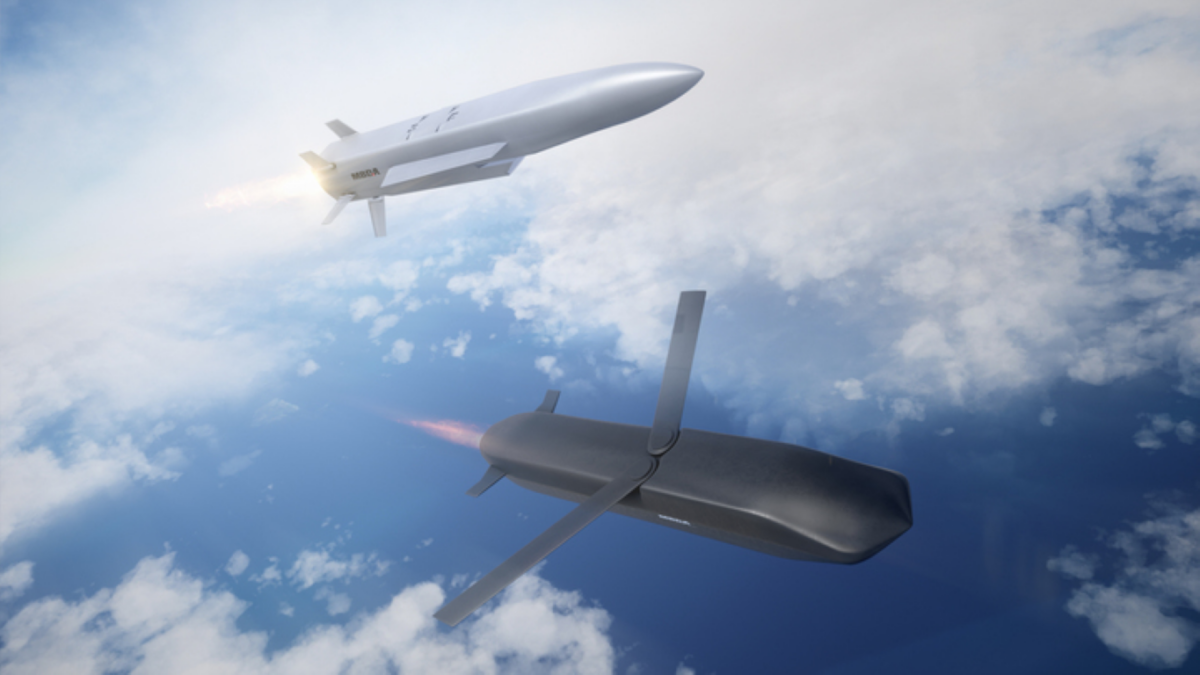
(I will add more in subsequent updates)
FC/ASW Speculation
No announcement on the demonstration or manufacturing phases have been made as at June 2024, and unlikely until after the 2024 General Election.
There is clarity with the air launched variant to replace Storm Shadow (SPEAR Cap 5) and SCALP, the requirements are obvious, and the path to service is clear.
There are no indications yet whether this missile will have any ground or naval vessel launch options, although it seems unlikely, with the working assumption that it will only arm Typhoon and Tempest aircraft, not F-35B.
This would align with the original SPEAR Cap 5 requirement from 2005, and congruent with Storm Shadow stock reduction via UK usage and those gifted to Ukraine.
There is, however, less clarity, at least for the UK, on the surface launched ant-ship variant
Questions remain unanswered on whether it will have Mk41 VLS compatibility (for UK future surface combat vessels), or only SYLVER or deck mount. Furthermore, It is uncertain if there will be a submarine launched variant (VLS or encapsulated) or if there are any options for aircraft (fixed or rotary) launch, and finally, what land attack capability it will have.
The Royal Navy has the Naval Strike Missile in service, but this is not Mk41 compatible (although Kongsberg has proposed this for some time).
Given the likely preponderance of Mk41 VLS on future RN vessels, it seems perfectly logical to specify this as a key user requirement.
France does not use Mk41.
This creates an obvious problem, if the RN wants Mk41 integration for the anti ship version of FC/ASW (FOSW), it will have to pay for it.
Other Mk41 options include the Block VA Tomahawk (MST) anti ship variant or the AGM-158C LRASM.
There seems much that is unclear for the RN half of FC/ASW.
Change Status
| Change Date | Change Record |
| 18/06/2024 | Initial issue |
| 29/11/2024 | Update on Assessment Phase progress |

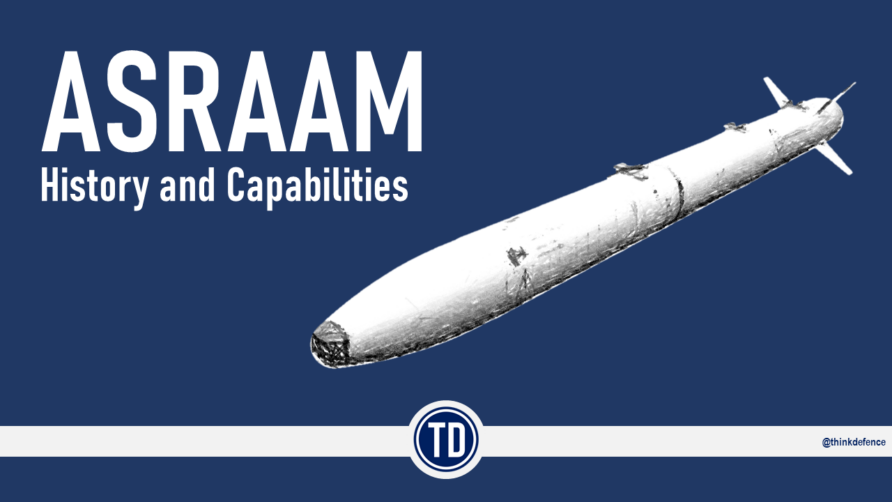
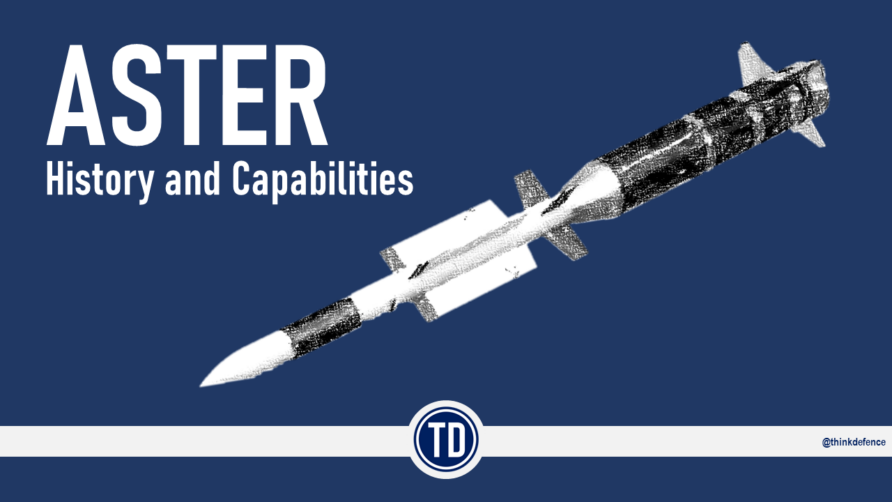
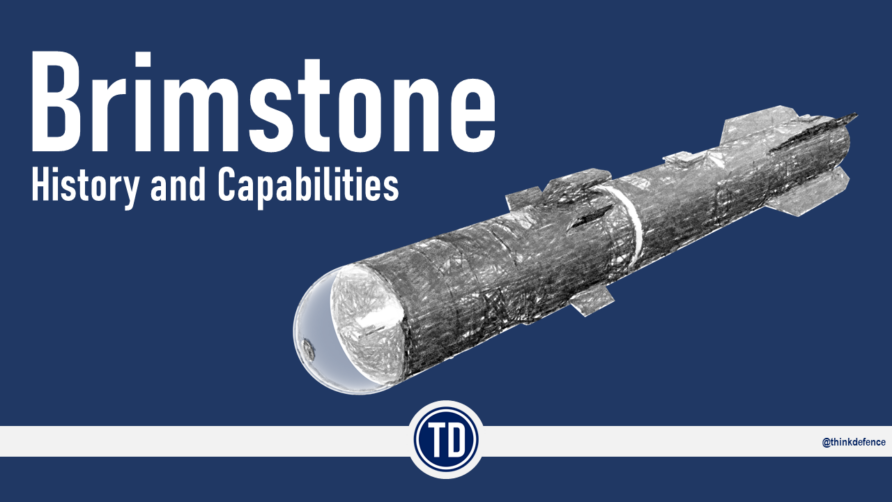
The SPEAR programme's aim of delivering a weapon system capable of being used against stationery targets did seem to be a very niche capability.
Worth noting that the French have also previously stated that the Supersonic missile will have an air to air capability against high value targets like AWACS and AAR at extreme ranges. Which presumably implies that it will be air launched at some point as well…..
Whether this is another variant or an adaptation of the standard missile's guidance I have no idea…
Like you say air launched subsonic has a clear role, and I suspect a clear market, to replace Storm Shadow and SCALP-EG (which are performing exceptionally well in Ukraine), VL launched supersonic has a role to play as well, as a replacement for Harpoon/Exocet/Teseo…and for export sales…which MBDA France have been living off from Exocet for decades….but which VL will that be launched from..?
But….as you also rightly say, there is a degree of disjointedness about the whole thing…some thoughts…
– France has MdCN on its frigates and Subs, and they're a recent purchase…so their interest in the Subsonic, Stealthy long range missile for land attack from ships or subs 'might' be limited in the near-mid term.
– MBDA has also just come up with the concept of a land launched MdCN as the Land Cruise Missile (LCM)…which again doesn't sound that joined up…
– The RN has invested in NSM to close the AShM gap…understandable in the short-medium term (what else is there that is modern and available?), with NSM clearing up as the 'go to' Western anti ship missile everywhere, so how much of a market will there be for FC/ASW in its anti-ship guise by the time it arrives? And we all know how 'interim' purchases usually turn out…
– With NSM on RN ships its not a massive step to JSM on the F-35….integration of any munition is expensive so if its already paid for by someone else…
– At some point someone will integrate JSM on P-8…Norwegian's and Australians have looked at this (but to be fair its gone quiet).
– US is out there with LRASM clearing up some sales, but also focusing on long range, stealthy for anti shipping…not supersonic, medium ranged…
– Both UK, France and Italy have a need for air launched…from multiple platforms. But land launch, sub launch and, most importantly, VL from ships are confused…which VL? We know France wants Sylver A70…but UK and exports will want Mk.41 Strike Length…
FCASW 'could' have been everything for everyone…2 missiles….land attack, anti-shipping, extreme long range air to air for use against force multipliers (supersonic only), VL, sub launched encapsulated, canister and air launch…but I'd guess now that whilst I suspect the 2 variants you highlight will be a success (llong range land attack from aircraft, supersonic anti-ship from VL) we'll look back and see an opportunity missed to do a whole lot more….I hope I'm proven wrong though…